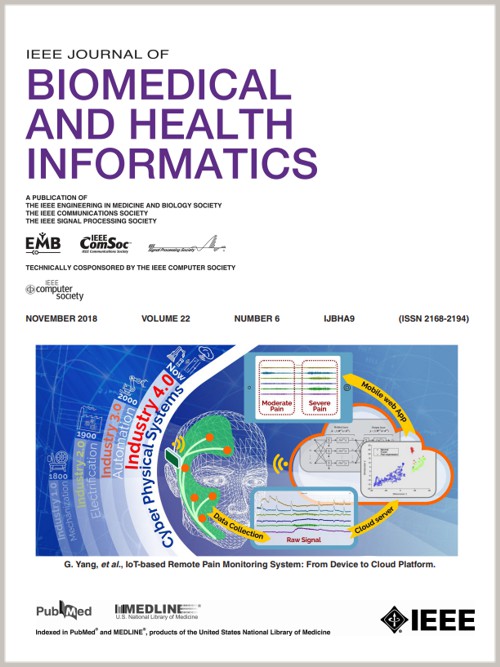BioSAM: Generating SAM Prompts From Superpixel Graph for Biological Instance Segmentation
IF 6.7
2区 医学
Q1 COMPUTER SCIENCE, INFORMATION SYSTEMS
IEEE Journal of Biomedical and Health Informatics
Pub Date : 2024-10-04
DOI:10.1109/JBHI.2024.3474706
引用次数: 0
Abstract
Proposal-free instance segmentation methods have significantly advanced the field of biological image analysis. Recently, the Segment Anything Model (SAM) has shown an extraordinary ability to handle challenging instance boundaries. However, directly applying SAM to biological images that contain instances with complex morphologies and dense distributions fails to yield satisfactory results. In this work, we propose BioSAM, a new biological instance segmentation framework generating SAM prompts from a superpixel graph. Specifically, to avoid over-merging, we first generate sufficient superpixels as graph nodes and construct an initialized graph. We then generate initial prompts from each superpixel and aggregate them through a graph neural network (GNN) by predicting the relationship of superpixels to avoid over-segmentation. We employ the SAM encoder embeddings and the SAM-assisted superpixel similarity as new features for the graph to enhance its discrimination capability. With the graph-based prompt aggregation, we utilize the aggregated prompts in SAM to refine the segmentation and generate more accurate instance boundaries. Comprehensive experiments on four representative biological datasets demonstrate that our proposed method outperforms state-of-the-art methods.BioSAM:从超像素图生成用于生物实例分割的 SAM 提示。
无提案实例分割方法极大地推动了生物图像分析领域的发展。最近,"任意分割模型"(Segment Anything Model,SAM)在处理具有挑战性的实例边界方面表现出了非凡的能力。然而,直接将 SAM 应用于包含形态复杂、分布密集的实例的生物图像,并不能获得令人满意的结果。在这项工作中,我们提出了一种新的生物实例分割框架--BioSAM,它能从超像素图中生成 SAM 提示。具体来说,为了避免过度合并,我们首先生成足够的超像素作为图节点,并构建初始化图。然后,我们从每个超像素生成初始提示,并通过图神经网络(GNN)预测超像素之间的关系将它们聚合起来,以避免过度分割。我们将 SAM 编码器嵌入和 SAM 辅助超像素相似性作为图的新特征,以增强其分辨能力。通过基于图的提示聚合,我们利用 SAM 中的聚合提示来完善分割并生成更准确的实例边界。在四个具有代表性的生物数据集上进行的综合实验表明,我们提出的方法优于最先进的方法。
本文章由计算机程序翻译,如有差异,请以英文原文为准。
求助全文
约1分钟内获得全文
求助全文
来源期刊

IEEE Journal of Biomedical and Health Informatics
COMPUTER SCIENCE, INFORMATION SYSTEMS-COMPUTER SCIENCE, INTERDISCIPLINARY APPLICATIONS
CiteScore
13.60
自引率
6.50%
发文量
1151
期刊介绍:
IEEE Journal of Biomedical and Health Informatics publishes original papers presenting recent advances where information and communication technologies intersect with health, healthcare, life sciences, and biomedicine. Topics include acquisition, transmission, storage, retrieval, management, and analysis of biomedical and health information. The journal covers applications of information technologies in healthcare, patient monitoring, preventive care, early disease diagnosis, therapy discovery, and personalized treatment protocols. It explores electronic medical and health records, clinical information systems, decision support systems, medical and biological imaging informatics, wearable systems, body area/sensor networks, and more. Integration-related topics like interoperability, evidence-based medicine, and secure patient data are also addressed.
 求助内容:
求助内容: 应助结果提醒方式:
应助结果提醒方式:


